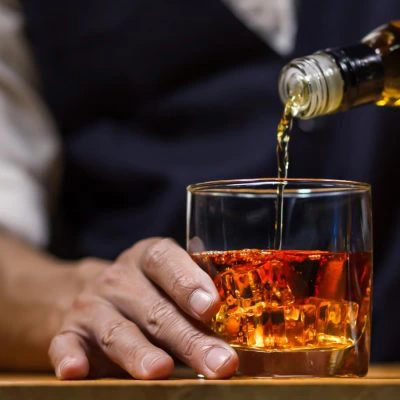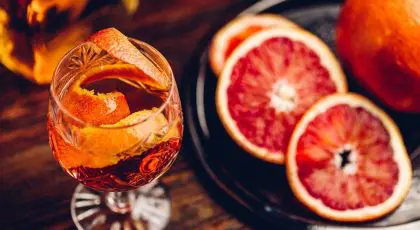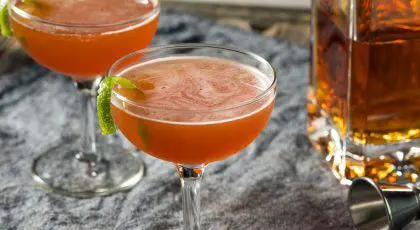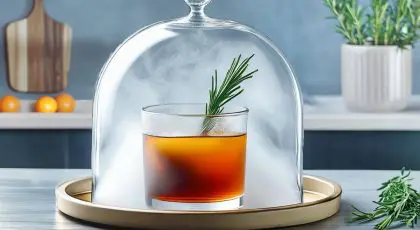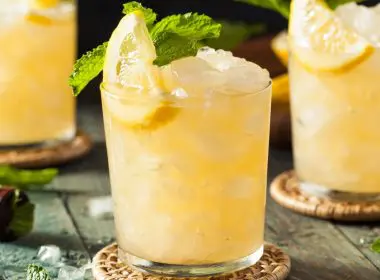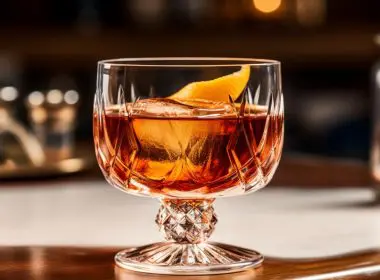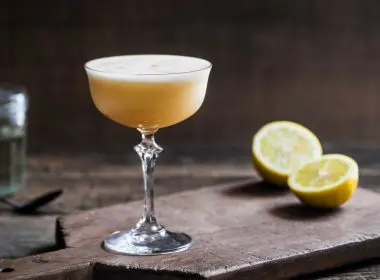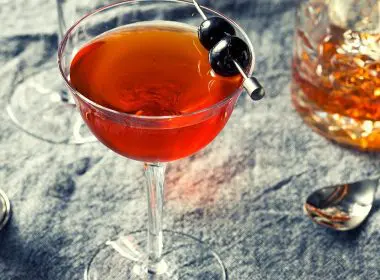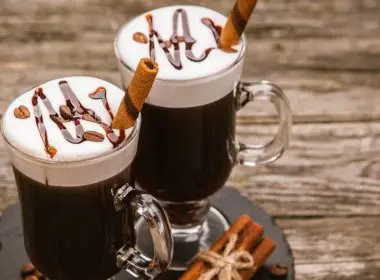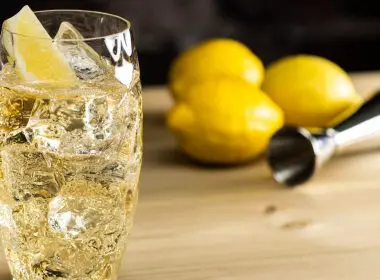Scotch vs. Bourbon: What’s the Difference?
Jump to:
Scotch vs. bourbon might sound like a straight-up flavor showdown, but the real story runs deeper than sweet vs. smoky. These iconic whiskeys come from two different worlds—America and Scotland—with their own rules, ingredients, and character. In this guide, we look at what sets them apart, why it matters, and how to pick the right pour for your mood, your cocktail, or your next great whiskey adventure.
Is it whisky or whiskey (with an e)?
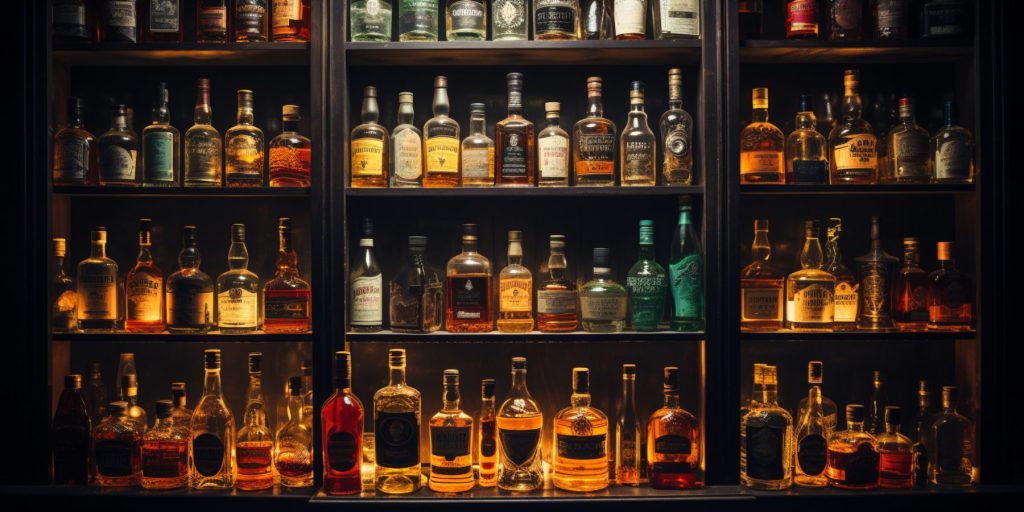
Let’s start by addressing a little linguistic nuance when it comes to bourbon vs. whiskey vs. scotch. Both bourbon and scotch are types of whiskey, so they’re like siblings—same same, but different.
The spelling of whisky or whiskey may vary depending on where it’s produced. The whisky variation is typically associated with Scottish and Japanese whiskies, while whiskey is commonly used in Ireland and the United States. As such, bourbon is a whiskey, while scotch is a whisky.
The original term has its roots in the Gaelic languages of Ireland and Scotland. The word is derived from the Irish word “uisce beatha” (pronounced “ish-ka ba-ha”), which means “water of life.” In Scottish Gaelic, the equivalent term is “uisge beatha” (pronounced “oosh-ka ba-ha”). Over time, these terms evolved into the modern English word whiskey.
Types of Whiskey: An Easy & Concise Guide
Origins and legal definitions
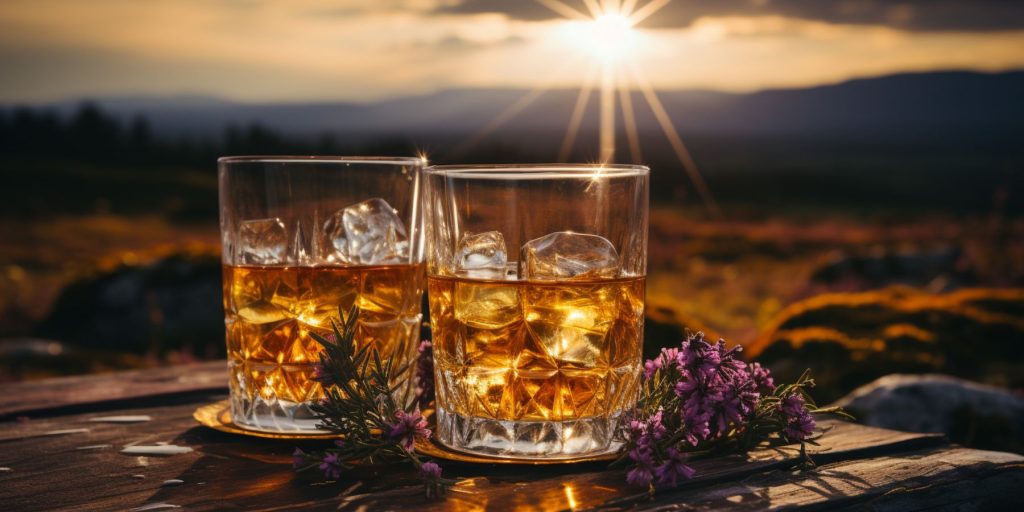
The difference between scotch and bourbon begins with geography and strict legal standards. Scotch must be made in Scotland—if it’s not produced and matured there, it legally can’t be called scotch.
The same goes for bourbon, which is a distinctly American product. While it’s most closely tied to Kentucky, where around 95% of it is made, bourbon can legally be produced anywhere in the U.S. To qualify, it must follow specific rules laid out in U.S. law, including being made from a grain mash that’s at least 51% corn, distilled to no more than 160 proof, and aged in new, charred oak barrels.
Scotch, on the other hand, has to be distilled and matured in oak casks in Scotland for at least three years. There are five recognized types of scotch whisky, each with its own production style: single malt scotch whisky, single grain scotch whisky, blended malt scotch whisky, blended grain scotch whisky, and blended scotch whisky.
Single malt scotch is one of the most popular—it is made entirely from malted barley at a single distillery using pot stills, offering a distinctive snapshot of place and tradition.
While bourbon must always use new barrels, scotch typically matures in used ones—often ex-bourbon casks—which adds another layer of connection between these two whiskey worlds. Despite their different origins, both are protected by geographic rules that ensure authenticity and preserve tradition.
Go pro: Choosing the Best Whiskey for an Old Fashioned (Bourbon, Rye, or Scotch?)
Key ingredients

One of the biggest contributors to the difference between scotch whisky and bourbon is the grain bill (the specific grains used in each spirit).
Bourbon is made primarily from corn. By law, at least 51% of the mash must be corn, and many producers go even higher. The rest of the mash is usually made up of grains like rye, malted barley, or wheat, each of which influences the flavor. Corn brings sweetness and richness, while rye can add a peppery spice and wheat offers a smooth, soft texture.
Scotch, especially single malt, is made from 100% malted barley. This gives it a completely different backbone. It is more robust and drier, with subtle earthy or cereal notes depending on the distillery and region. Unlike bourbon, scotch production doesn’t rely on a mash bill because it’s often made from just one grain.
The ingredients used are a key reason why bourbon tends to feel rounder and sweeter, while scotch has a drier, more layered complexity. Grain choice is the starting point of their flavor stories—and it sets them on two very different paths.
Also see: Rye vs. Bourbon (The Key Differences Explained)
Distillation & aging process
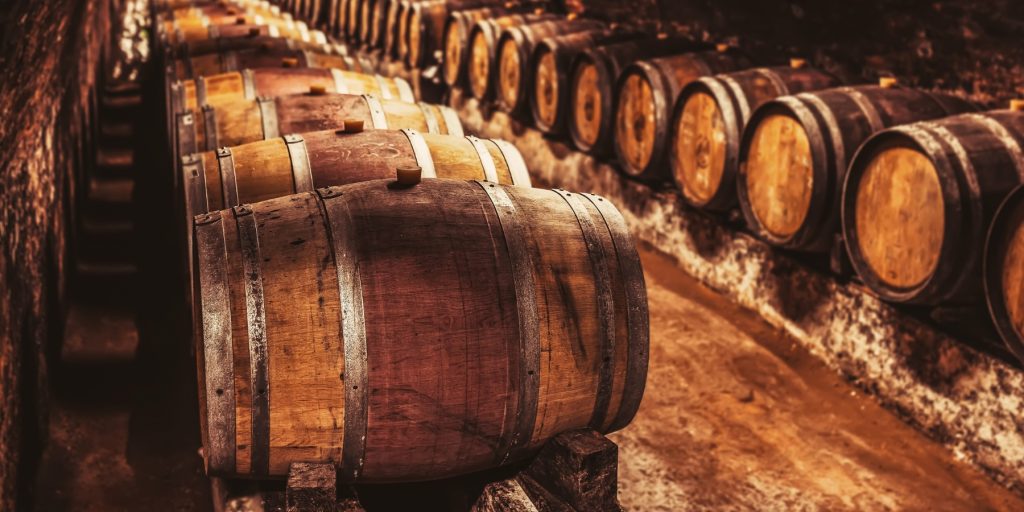
While both spirits are aged in oak, their distillation and aging processes take them in very different directions.
Bourbon must be aged in new charred oak barrels, and that deep char—sometimes referred to as an “alligator char”—gives it its rich color and signature notes of vanilla, caramel, and warm spice. These barrels can only be used once for bourbon, and afterward, they’re often shipped off to Scotland, where they start their second life aging scotch.
Scotch is typically matured in used barrels, many of which once held bourbon or sherry. Since these casks have already been “broken in”, they impart more subtle flavors, allowing the malted barley to take center stage.
Scotch must be aged for at least three years, but many expressions spend a decade or more in the barrel. Bourbon, on the other hand, only needs two years to be called straight whiskey, but many producers age theirs much longer to build character and complexity.
Climate plays a huge role, too. In Kentucky, hotter summers and cold winters cause the whiskey to expand and contract inside the barrel, accelerating the aging process. In Scotland’s cooler, damper climate, maturation is slower and more gradual, often leading to lighter, more delicate flavors—though heavily peated or sherry-aged scotches can still deliver a bold, full-bodied punch.
So, while both are shaped by time in wood, the conditions they age in, and the barrels themselves make all the difference.
Also see: 6 Bold Smoked Bourbon Cocktails to Try at Home
Flavor profile comparison
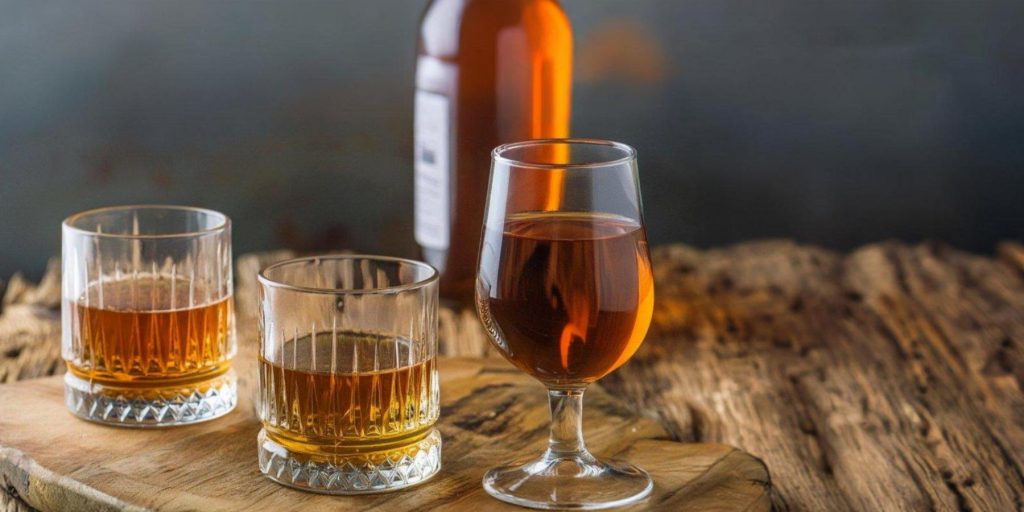
When it comes to flavor, bourbon and scotch offer wildly different experiences, and that’s where things get fun.
Bourbon is known for its rich, full-bodied sweetness. That high corn content brings smooth notes of vanilla, caramel, and brown sugar, often with hints of nuts, spice, or dried fruit depending on the mash bill and barrel char.
A prime example is Wild Turkey Rare Breed, a barrel-proof bourbon that combines 6-, 8-, and 12-year-old stocks. This compelling expression offers intense vanilla and caramel notes, complemented by hints of sweet tobacco and a touch of orange and mint, setting the scene for a remarkably smooth yet bold taste.
Scotch, on the other hand, is a broader and more varied universe. While smoky, peaty drams from Islay often steal the spotlight, not all scotch has that campfire quality. In fact, single malts from Speyside and the Highlands can be bright, fruity, floral, or even honeyed.
The Glen Grant 12-Year-Old Single Malt Scotch Whisky is a gorgeous example of an expression of a lighter, fruit-forward profile. Matured in old bourbon and Oloroso sherry casks, it reveals aromas of honey, pear, and apple, with tasting notes of apple pie crust, caramel, and vanilla, culminating in a lingering fruity finish with subtle hints of spice.
Inside scoop: Manhattan Drink vs Old Fashioned Cocktail
How to enjoy scotch vs. bourbon
Whether you’re sipping scotch or bourbon, the way you enjoy your whiskey can change the entire experience. Some people prefer it neat to appreciate the full depth of flavor, while others like it on the rocks to soften the ABV and open things up. Pairing your pour with the right glass, and even a well-chosen snack, can also take things to the next level.
Neat
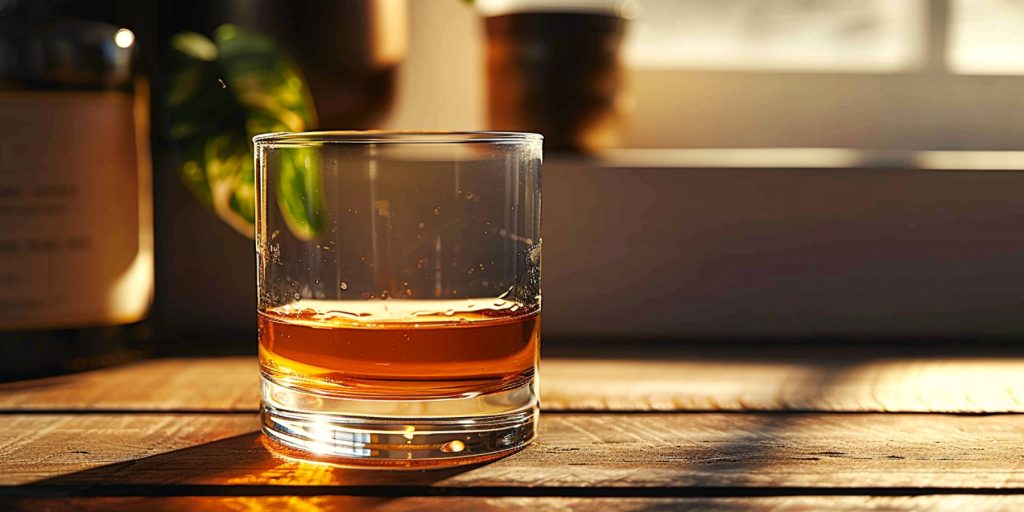
Drinking whiskey neat means it’s served straight from the bottle, no ice, no water, just pure expression. This is a great way to experience the full intensity of both scotch and bourbon, especially if you’re trying a higher-end bottle. When served neat, every flavor note comes through in full force.
Snack pairings? Try scotch with aged cheddar, smoked almonds, or dark chocolate to enhance those fruity or smoky notes. Bourbon pairs beautifully with toasted pecans, candied bacon, or even a square of maple fudge—anything that can stand up to its sweetness and spice.
For neat pours, reach for a Glencairn glass or a classic tulip-shaped whisky glass. These glass types help to focus the aromas and give you room to swirl and sniff before you sip.
Read next: Your Guide to Finding the Best Whiskey to Drink Neat
On the rocks

Pouring whiskey over ice can mellow the burn and make bold flavors more approachable. This works especially well with stronger bourbons like Wild Turkey, which still hold their character even with a few cubes in the glass. The chill and dilution help soften the punch and gradually reveal more subtle notes as the ice melts.
If you’re sipping bourbon on the rocks, pair it with salty snacks like roasted peanuts or crispy bacon strips. The salt brings out those caramel and vanilla tones. For scotch, go for milder pairings like oat biscuits, buttery shortbread, or a sliver of creamy brie to keep things elegant and balanced.
Use a short, heavy-bottomed rocks glass for this style—something with weight and presence. A single large cube or sphere is ideal; it chills without watering things down too quickly.
The water-drop method
Some whiskey fans prefer to skip the ice and add a few drops of water to their pour instead, especially when tasting higher-proof expressions. A splash can help open up the nose and reveal flavors that might otherwise stay hidden. This method works particularly well with barrel-proof bourbons and cask-strength scotches, bringing out complexity while easing the burn.
Learn more: How to Drink Whiskey Straight Like a Pro
Top 5 bourbon cocktails
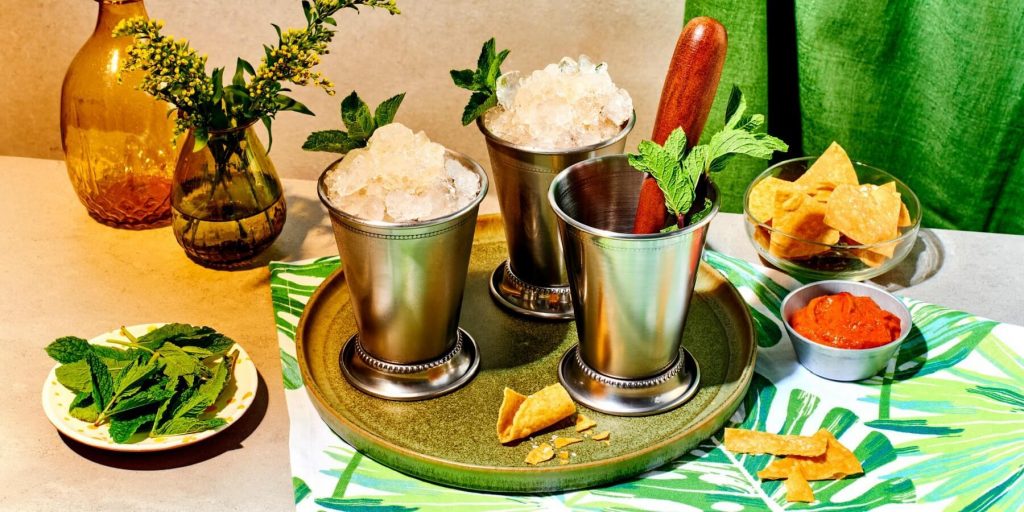
Want to see bourbon shine in a cocktail? Here are a few of our favorite bourbon-based clinkers to try at home:
What to Mix with Bourbon: Easy Bourbon Cocktails to Try at Home
Top 5 scotch cocktails
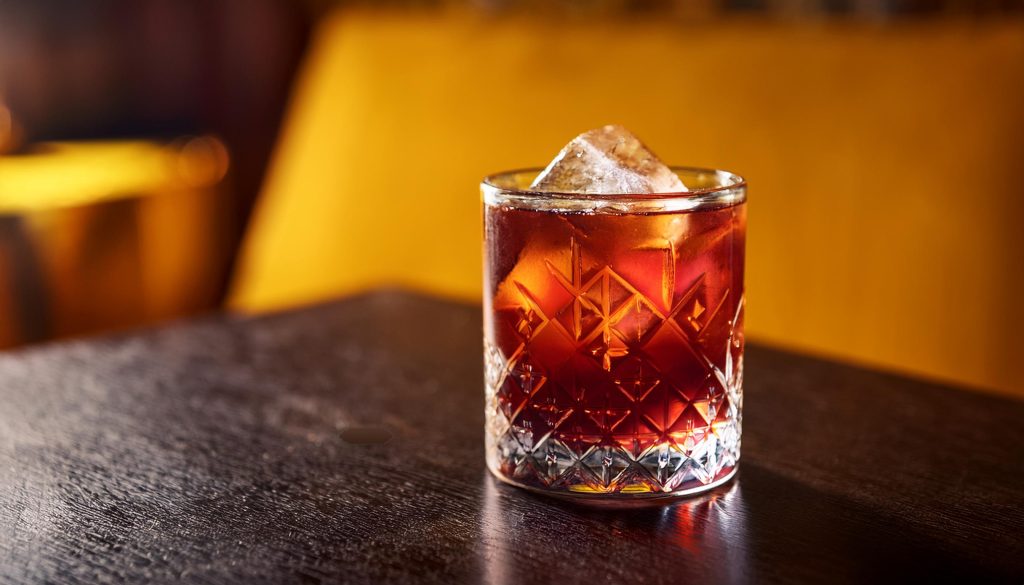
Ready to cast scotch in the limelight? Try these suave sippers on for size:
What to Mix with Whiskey: Top Mixers and Pairing Ideas
Which one should you choose?
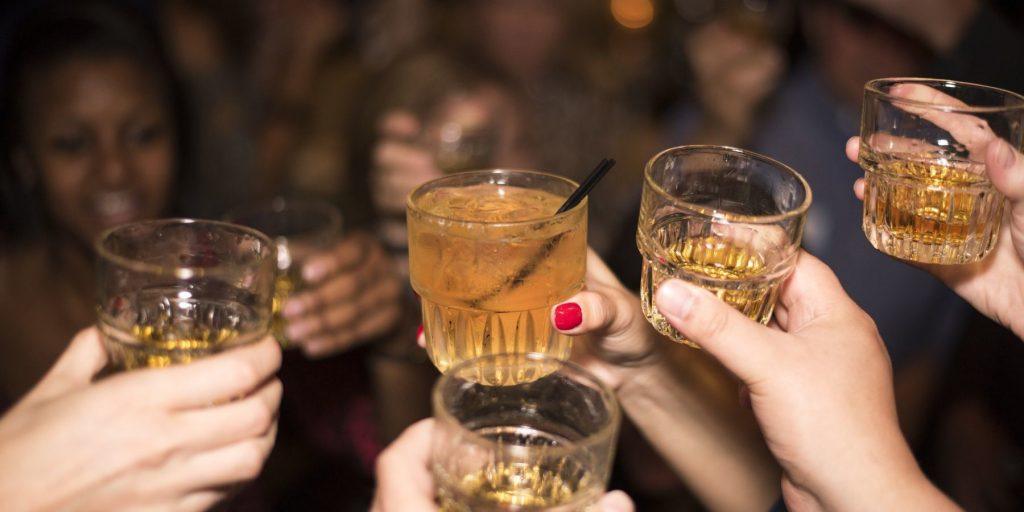
When it comes to picking between scotch and bourbon, it really comes down to what you’re into. Prefer something sweet, smooth, and easy to sip? Bourbon’s your go-to. If you’re after something drier, layered, or a little smoky, scotch might be more your style.
Bourbon tends to show off in bold, approachable cocktails like a Mint Julep or Old Fashioned. But scotch has its moment too—think Rob Roy, Old Pal, or a smoky Sazerac. The key is matching the right whisky to the right drink.
As for budget, bourbon usually gives you more bang for your buck, especially with well-aged expressions. Scotch often carries a higher price tag, thanks to longer aging and import costs, but for whisky lovers, the depth can be worth the spend.
Interesting stuff, right? Now you have all the info you need to find your favorite. Remember to sign up for our newsletter to stay in the Mix! In the meantime, you can visit the Wild Turkey and The Glen Grant websites for more cocktail inspiration.
